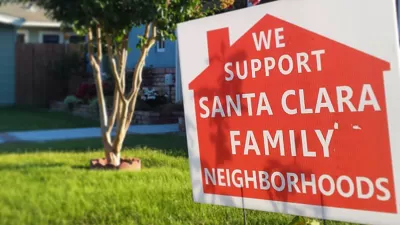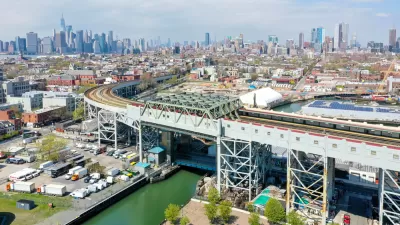A new study calculates the national consequences of restrictive housing regulations in three cities: San Francisco, New York, and San Jose.

Annie Lowrey doesn’t pull any punches in introducing a discussion about the external costs of well-preserved residential neighborhoods: "These neighborhoods are adorable. They are desirable. And they are a total economic disaster."
Lowrey's strongly phrased indictment follows newly released research by Chang-Tai Hsieh of the University of Chicago and Enrico Moretti of the University of California, Berkeley, who study the damage inflicted by constrained housing markets in San Francisco, New York, and San Jose on the larger economy. In other words, the study examines how the growth of cities determines the growth of nations.
And by that measure, the news is not good. According to Lowrey's explanation, the study, "calculates that the United States economy would be nearly 10 percent bigger if just three cities — New York, San Jose, and San Francisco — had loosened their constraints on the supply of housing and let more people in during the past few decades. Let that sink in: 10 percent bigger." That loss is calculated relative to hypothetical conditions imagining those cities with average land use regulations, rather than the highly restrictive regulations that actually exist.
Attentive readers will recall that Timothy B. Lee of Vox picked up news of a discussion draft of the study by Hsieh and Moretti in July 2014. Now the study is complete and made publicly available. Also, at the time, the angle on the study's findings was described differently, focusing on the lost productivity of workers that can't afford to move to cities thanks to the obstruction of NIMBY activists.
FULL STORY: The High Cost of Expensive Townhouses

Maui's Vacation Rental Debate Turns Ugly
Verbal attacks, misinformation campaigns and fistfights plague a high-stakes debate to convert thousands of vacation rentals into long-term housing.

Planetizen Federal Action Tracker
A weekly monitor of how Trump’s orders and actions are impacting planners and planning in America.

In Urban Planning, AI Prompting Could be the New Design Thinking
Creativity has long been key to great urban design. What if we see AI as our new creative partner?

King County Supportive Housing Program Offers Hope for Unhoused Residents
The county is taking a ‘Housing First’ approach that prioritizes getting people into housing, then offering wraparound supportive services.

Researchers Use AI to Get Clearer Picture of US Housing
Analysts are using artificial intelligence to supercharge their research by allowing them to comb through data faster. Though these AI tools can be error prone, they save time and housing researchers are optimistic about the future.

Making Shared Micromobility More Inclusive
Cities and shared mobility system operators can do more to include people with disabilities in planning and operations, per a new report.
Urban Design for Planners 1: Software Tools
This six-course series explores essential urban design concepts using open source software and equips planners with the tools they need to participate fully in the urban design process.
Planning for Universal Design
Learn the tools for implementing Universal Design in planning regulations.
planning NEXT
Appalachian Highlands Housing Partners
Mpact (founded as Rail~Volution)
City of Camden Redevelopment Agency
City of Astoria
City of Portland
City of Laramie





























